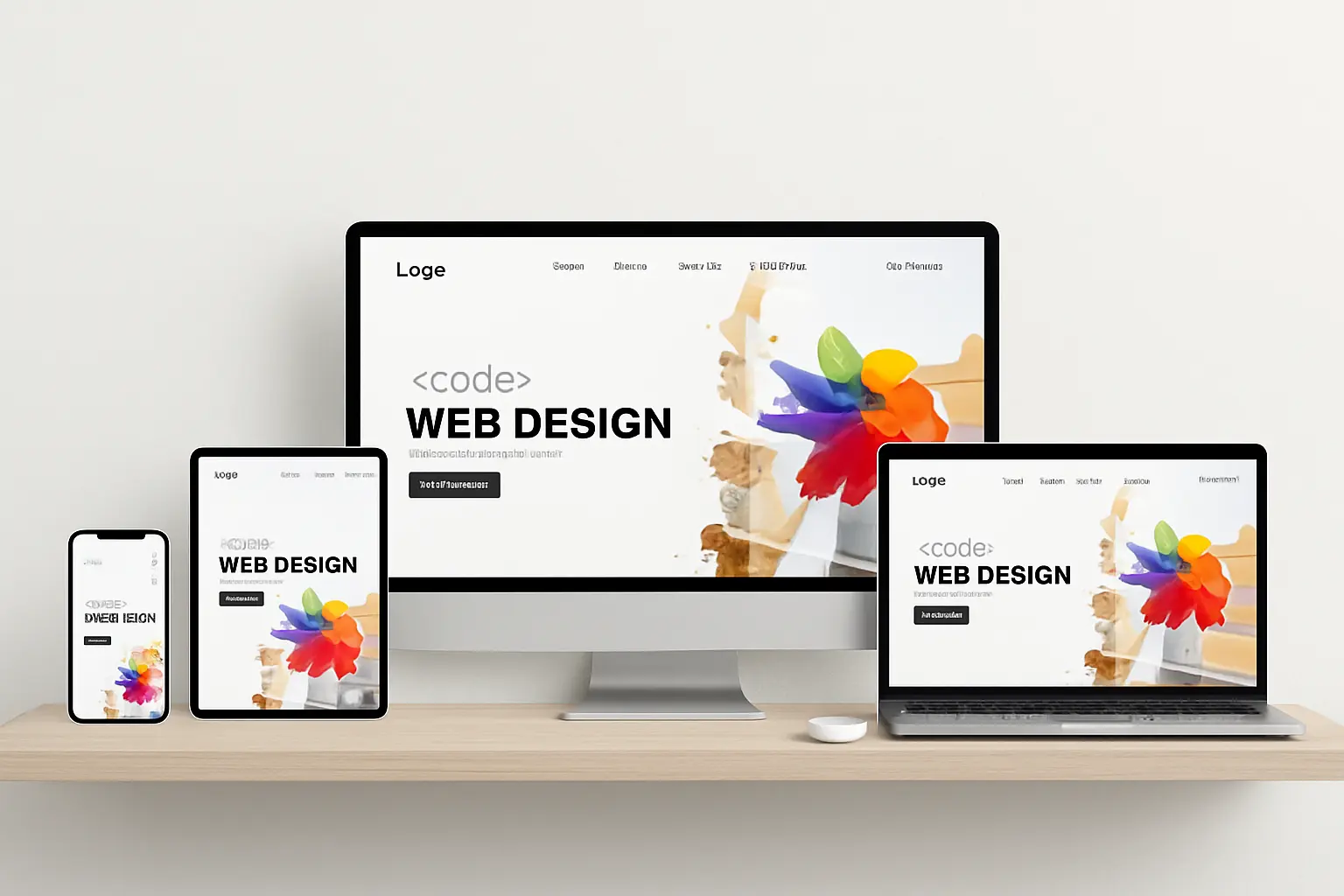Website design in 2025 is about much more than looks. It’s about building websites that people enjoy using, that feel smooth and easy, and that support a brand’s goals. From user experience (UX) and responsive design to accessibility and digital marketing, the way a website is planned and built has never been more important. This guide explores the best practices, trends, and simple approaches shaping websites in 2025.
Why Website Design Best Practices Matter in 2025
Your website is often the first impression people have of your business. A clear, attractive site builds trust, while a confusing one pushes visitors away. In today’s digital world, where everyone has endless options, you need a website that connects with human perception and feels professional.
When a website has strong functionality and is created with custom design in mind, it not only looks good but also works in a way that feels natural to the visitor. A good site makes it simple for people to find information, ask questions, or make a purchase. This is true whether it’s a B2B website built to attract business partners, a B2C website for everyday customers, or an eCommerce website for online shopping.
User-Centered Design: The Core of Modern Websites
At the heart of every website is the experience of the person using it. User experience (UX) is about how people feel when they browse. If a site is hard to move around on, loads slowly, or looks cluttered, visitors leave quickly. On the other hand, a website that is clean, clear, and fast makes people stay longer and take action.
Simple things make a big difference: clear menus, readable text, and quick loading pages. User experience inspiration often comes from looking at how people interact with successful websites and applying those lessons. This is why custom web design is powerful, it lets businesses design specifically for their audience instead of using a one-size-fits-all approach.
Responsive Web Design & Accessibility
In 2025, people browse the internet on phones more than on computers. That means your site must work well on screens of all sizes. Responsive design makes sure your website looks and works smoothly on a phone, tablet, or desktop. This helps visitors trust your brand, because they can explore your site no matter what device they use.
Equally important is accessibility. Websites should be usable by everyone, including people with disabilities. Adding simple features like clear text, descriptive image captions, and easy-to-use buttons makes the site more inclusive. Not only is this the right thing to do, but in many places, it’s also required by law. When combined with easy maintenance, accessibility helps websites stay relevant and welcoming for years to come.
Visual Trends Shaping Web Design in 2025
Design trends change over time, but in 2025, certain styles stand out. Websites are leaning toward:
- Bold layouts: Creative page structures that draw attention.
- Clean minimalism: Simple designs that focus on what matters most.
- Creative direction: Using storytelling, videos, or interactive features to keep visitors engaged.
- Portfolios: Highlighting work or products in sleek, easy-to-browse ways.
For online stores, eCommerce design is especially important. The way products are displayed, the ease of adding items to a cart, and a smooth checkout process can make or break sales. Combining attractive visuals with clear steps helps people feel confident in buying.
Building a Strong Website Behind the Scenes
A great-looking website also needs to work well behind the scenes. In simple terms, this means keeping things running smoothly so visitors don’t face slow speeds or broken links. A website should be built on solid foundations and checked regularly to make sure everything works as expected.
Many businesses use platforms like WordPress because they are flexible and easy to update. Tools like a theme builder let businesses create designs without starting from scratch. No-code design platforms are also becoming more popular, giving small businesses the ability to build professional sites without needing technical skills.
Even with these tools, it’s important to keep checking your website with a technical audit. This process makes sure that pages load fast, links work, and the site continues to meet visitor expectations.
Web Design for Different Business Models
Not every website serves the same purpose. The design depends on who you want to reach, and three common models stand out:
B2B Web Design
Business-to-business websites are designed to build trust and long-term relationships. These sites often highlight case studies, testimonials, and clear service explanations to show expertise. The layout should be professional, easy to navigate, and include straightforward ways to contact the company. Since decisions in B2B often involve multiple people, content should answer questions clearly and present value with facts and examples.
B2C Web Design
Business-to-consumer websites focus on creating a positive first impression and encouraging quick action. They often use colorful visuals, engaging stories, and simple navigation so customers can find what they need without effort. Calls-to-action like “Buy Now” or “Learn More” are placed where visitors naturally look. B2C design is about connecting emotionally, making the site enjoyable, and encouraging people to return.
E-Commerce Web Design
Online shopping websites need to combine beauty with practicality. Products should be displayed with clear photos, easy descriptions, and filters that help customers find items fast. The checkout process must be smooth, secure, and quick. Elements like reviews, trust badges, and clear return policies also increase confidence. A good eCommerce design makes buying feel simple and safe, while encouraging customers to keep exploring.
By understanding your audience, you can decide whether you need a custom web design, a WordPress site, or even a no-code design solution that balances cost and ease of use.
Branding & Marketing: Connecting the Dots
Your website is more than just a digital brochure, it’s part of your brand story. Strong branding creates a consistent look and feel across every page. Visitors should be able to recognize your style, colors, and voice instantly.
When paired with digital marketing integration, a website becomes a powerful tool. It can support online ads, social media campaigns, and email marketing, making it easier to attract and convert new customers. Adding tools that connect your website to these platforms helps everything work together smoothly, saving time and improving results.
The Future of Website Design Beyond 2025
The future of website design will bring even more focus on personalization. Websites will adjust to the needs and preferences of each visitor. No-code platforms will grow, allowing more people to create advanced websites easily. At the same time, creative ideas like interactive visuals and storytelling will continue to make websites stand out.



